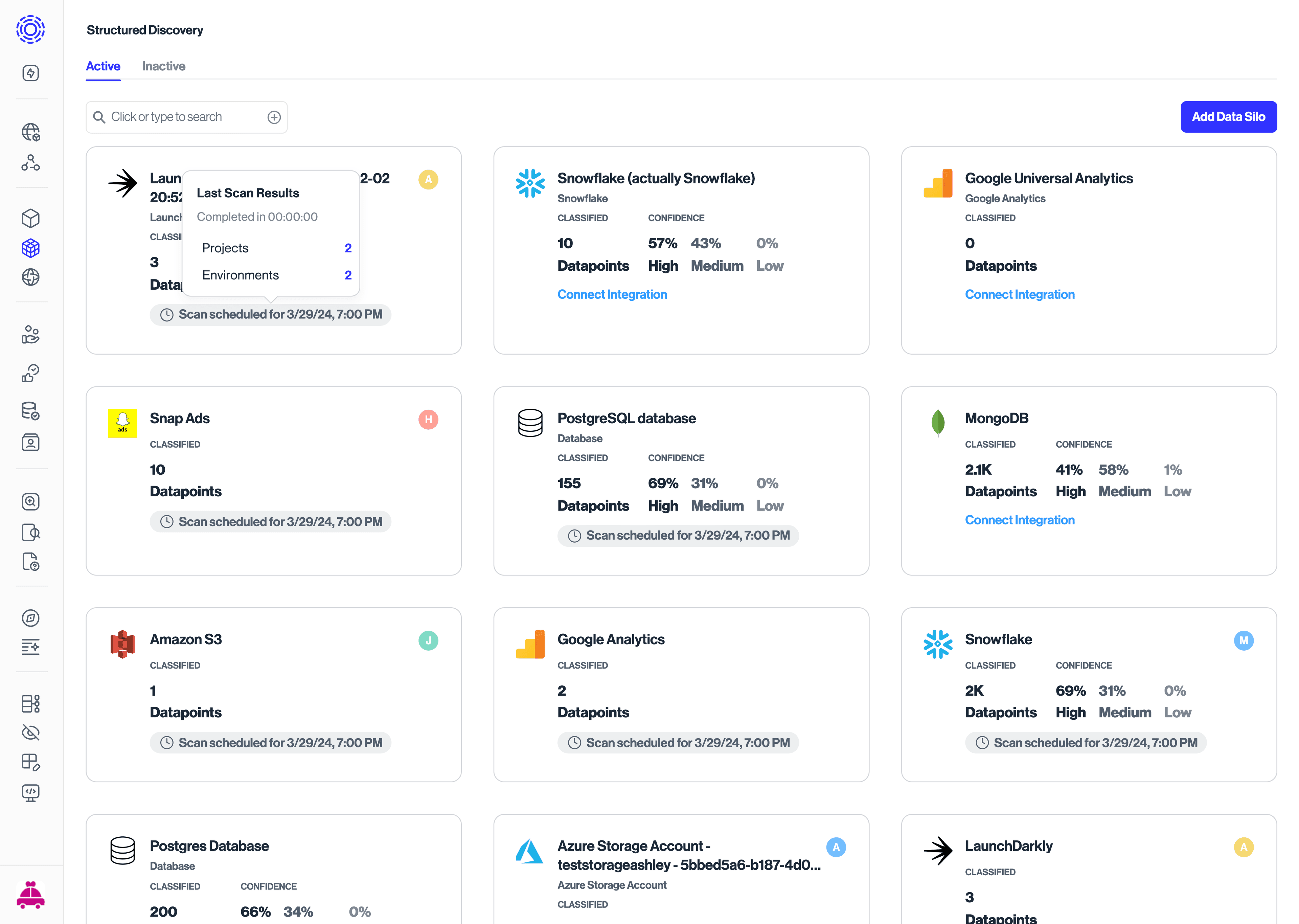Managing Connected Data Stores from Discovery
After turning Datapoint Schema Discovery on for a specific data store, you can adjust how often Transcend runs this plugin to scan for datapoints. Navigate to the specific data store from Infrastructure > Integrations, and then change the frequency inputs and start time under Structured Discovery.
After turning it on, you can see the status of the scan and the last time it ran. You can also manually trigger a scan by clicking the “Run Now” button.
Note: for Structured Discovery, volumes scanned here are counted towards usage credits. If you are looking for your current scan volume, remaining allocation or want to adjust your plan, check with your Transcend account manager.
From here, clicking on “View Datapoints” will take you back into Structured Discovery to a filtered view of the specific datapoints discovered from this data silo.
Note: The following section contains instructions applicable to Structured Discovery only.
We will continue to scan your data based on the frequency set in Infrastructure > Integrations. You can see the status of a current scan, scheduled scan, or future scan date in the Structured Discovery view.

The view you see above is the count of all objects of different types (differs per integration) found as part of the most recent scan run by Transcend on the data silo. This view is intended to provide you a progress indicator of how the scan Transcend is running is going.
The counts you see here may differ from the actual number of objects visible to you in the "Browse" view for the silo. This can be due to any number of reasons, some of which are: there is a change in permissions granted to Transcend for the data silo, or changes were made in the data silo's schema on your end.
You can click into the integration to see more details on the progress of the scan, as well as operational metrics around datapoints found, verified data categories, and progress on tables needing verification.
